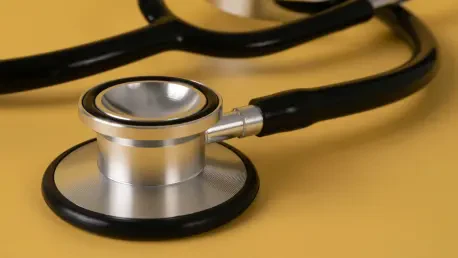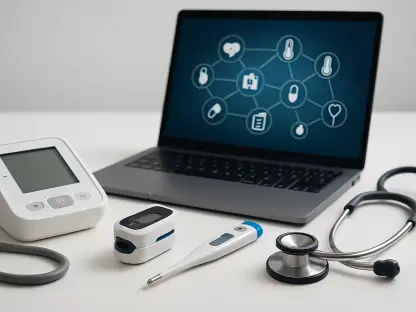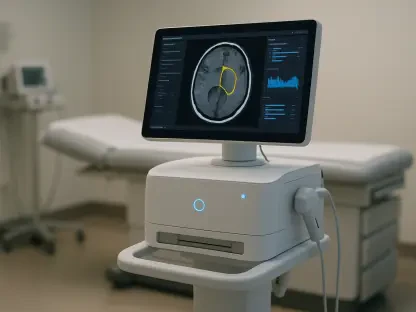Fort Frances is on the cusp of a significant healthcare transformation, poised to see remarkable changes in its diagnostic capabilities. The “Lights, Camera, Diagnosis” campaign launched by Riverside Health Care aims to revolutionize the local medical landscape by incorporating Magnetic Resonance Imaging (MRI) technology within the Fort Frances hospital. This initiative is not merely about procuring advanced equipment; it’s about creating a more accessible, patient-focused healthcare environment for the Rainy River district. Residents of Fort Frances have long faced the inconvenience of traveling substantial distances for critical MRI services, often journeying as far as Thunder Bay or other cities to receive essential diagnostic procedures. The campaign seeks to alleviate these trials by providing local solutions that promise to elevate patient care and foster community well-being. Additionally, the ambitious fundraising drive, targeting a goal of $1.6 million, highlights the concerted effort required at both community and governmental levels to ensure success. With a mix of local engagement, innovative fundraising methods, and coordinated advocacy for provincial resources, Riverside Health Care endeavors to lead this much-needed healthcare evolution.
Enhancing Diagnostic Services
Riverside Health Care’s initiative to introduce MRI technology in the Fort Frances hospital is a crucial part of its wider strategy to upgrade diagnostic services throughout the Rainy River district. This campaign underscores an ongoing commitment to delivering timely and accurate medical evaluations, which are essential for effective patient treatment and management. By installing MRI equipment locally, residents will gain easier access to one of the most sophisticated imaging techniques in modern medicine, vital for diagnosing a range of conditions—from neurological disorders to musculoskeletal injuries. Currently, patients must endure lengthy journeys for scans, potentially delaying treatment and adding stress to an already challenging period. The initiative also encompasses the installation of digital radiography units in Fort Frances and Rainy River hospitals to complement existing diagnostic services. Digital radiography promises faster results, clearer images, and minimal radiation exposure, improving both patient safety and the efficiency of medical staff. Together, these advancements aim to transform the standard of healthcare available in the community, placing advanced medical technology within reach for everyone.
Another noteworthy aspect of the expansion is engagement with the broader Northwestern Ontario region. Communities such as Kenora and Sioux Lookout are considered for similar developments, demonstrating a vision for comprehensive healthcare accessibility across the area. Creating a network of facilities with MRI capabilities ensures that people throughout the region can benefit from timely diagnostics, a critical step in proactive health management. This network not only relieves pressure on larger urban centers but also highlights a strategic shift towards balancing healthcare resources across geographical boundaries. As rural and remote areas often face challenges in attracting and retaining medical specialists, the availability of cutting-edge equipment like MRI not only serves to improve patient outcomes directly but also acts as an incentive for healthcare professionals to reside in these communities. By strengthening the local and regional healthcare framework, Riverside Health Care aims to address both current needs and future requirements, fostering a sustainable healthcare model.
Community and Campaign Efforts
The fundraising campaign spearheaded by Riverside Health Care is integral to realizing this vision of improved diagnostic services. Community involvement stands as a pillar of the campaign, urging local residents and businesses to support the effort through participation in various fundraising activities. From 50/50 draws to online contributions, these initiatives harness the power of collective action, embodying a shared desire to enhance community health. Holly Kaemingh, the fundraising director, has expressed confidence in reaching the $1.6 million goal, citing robust local enthusiasm and engagement. The importance of additional provincial funding is yet another critical factor, as it ensures sustainability and resource adequacy once the equipment is procured and installed.
Beyond financial contributions, the campaign actively involves community members through outreach and information dissemination on Riverside Health Care’s website and social media platforms. This open-dialogue strategy not only educates but also empowers residents, ensuring they remain informed and involved throughout the campaign’s lifecycle. Such transparency fosters trust and showcases a shared commitment to achieving enhanced healthcare outcomes. As excitement builds around this transformative step forward, the campaign represents more than resource mobilization; it reflects a strong community bond rooted in a collective goal. The anticipated success of the “Lights, Camera, Diagnosis” campaign can serve as a testament to what communal effort can achieve, potentially inspiring similar initiatives in other regions facing healthcare access challenges.
Looking Forward: Future Prospects and Impact
Fort Frances is on the brink of a pivotal healthcare shift, with plans to dramatically enhance its diagnostic services. Riverside Health Care’s “Lights, Camera, Diagnosis” campaign is set to transform the area’s medical framework by introducing Magnetic Resonance Imaging (MRI) technology to the Fort Frances hospital. This initiative goes beyond simply acquiring high-tech equipment; it is focused on building a more patient-centered and accessible healthcare system for the Rainy River district. Traditionally, Fort Frances residents have needed to travel long distances, sometimes to Thunder Bay or other cities, for vital MRI scans. The campaign looks to solve this issue by offering local diagnostic solutions, thereby improving patient care and boosting community health. The project involves an ambitious $1.6 million fundraising goal, underscoring the need for collaboration across community and government sectors. Through a combination of local involvement, creative fundraising strategies, and advocacy for provincial funding, Riverside Health Care aims to spearhead this necessary healthcare transformation.









